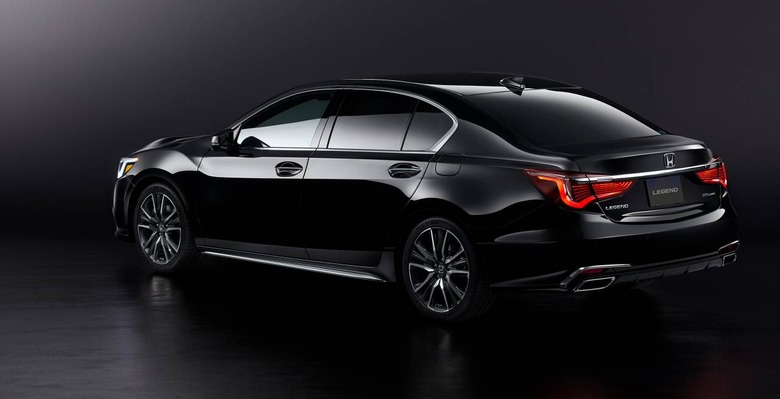Honda Will Launch A Level 3 Autonomous Car In The Next Six Months
Honda is planning to launch a Level 3 self-driving car within the next six months, though the autonomous vehicle isn't intended for US roads. It's a rare entrant into the misunderstood middle-ground of driverless technology, where cars are able to take over in certain conditions but not all the time.
According to the SAE definitions of autonomous driving, Level 3 vehicles do not require human supervision when the self-driving system is operational. However neither does that system run in all conditions: instead, it's active when certain criteria are met, such as on the highway. Outside of those situations, the human driver must retake control.
In Honda's case, its Traffic Jam Pilot system will operate when the vehicle is in congested traffic on an expressway in Japan. Its system has just received approval from the Japanese Ministry of Land, Infrastructure, Transport and Tourism (MLIT), which updated its road rules earlier this year to permit Level 3 autonomy. However, automakers must be individually designated as using the tech by the Ministry, and their cars must bear an "Automated Drive" sticker on the rear.
Honda hasn't given details on how the system will work, but the assumption is that Traffic Jam Pilot will be able to operate the car in congestion, holding its position in the lane and keeping pace with vehicles around it. It'll be offered first on the Honda Legend, the company's luxury sedan, before the end of its current fiscal year, or March 31, 2021.

Level 3 has proved controversial, in autonomous driving terms. Currently, only Level 2 systems are widely available, typically combining adaptive cruise control and lane-keeping, but requiring human monitoring so that a driver can weigh in should the car prove unable to deal with the situation. Most vehicles use sensors on the wheel to track that supervision, though less common is an eye-tracking sensor for hands-off operation.
Level 4 and Level 5, meanwhile, are completely supervision-free. Such vehicles can be trusted to operate themselves – the levels differ by the range of conditions in which that technology can function – without requiring a human driver to step back in.
It's that mixed role, of driver and passenger, that has led to concerns around Level 3 systems. In part that's because the readiness of a human driver to suddenly take back over the controls has been questioned, particularly if the autonomous vehicle has been running things for some time. Meanwhile, the legal responsibilities are also uncertain.
That's a maelstrom which has led other automakers to shelve their Level 3 plans altogether. Audi, for example, had planned to update its A8 flagship sedan with "Audi AI traffic jam pilot," a system which would take full control over the vehicle while in congestion and not require human supervision. Problem was, though the tech apparently worked, the legislation around the world simply wasn't ready for it, and without that legal framework Audi execs opted to put commercial launch of the project on hold.
Where that leaves Honda and its Traffic Jam Pilot system remains to be seen, though it's not hard to envisage the tech remaining a Japan-only product for the time being. The automaker isn't ignoring Level 4 and Level 5 autonomy, however, having been testing self-driving vehicles on US public roads since late 2015, and teaming with GM on the Cruise Origin self-driving taxi revealed in 2018.
